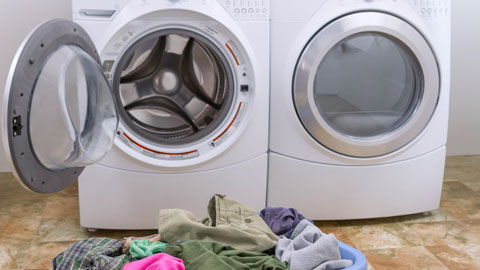Rainwater harvesting systems bring savings on laundry detergents
According to an ICTA-UAB thesis, the key to the efficiency of rainwater harvesting (RWH) systems lies in the savings on detergent and fabric softeners that they allow. Households with rainwater harvesting systems save over 5 Euros on every 10 wash cycles.

The study arises from the current need to find corrective and preventive measures to deal with water supply problems, particularly in view of the effects of climate change in the Mediterranean area and the water supply problems in arid zones. It analyses the potential for applying the system and its results in Barcelona's 73 districts and in the town of Hermosillo in the Mexican desert, and it shows that 80% of the savings incurred by installing these systems comes from reduced consumption of detergents and fabric softeners. This is because rainwater is soft water, meaning that it needs 59% fewer additives for washing than hard tap water.
The findings show that for every m3 of rainwater used to wash clothes (the equivalent of 11 wash cycles) there is a saving of 5.68 Euros on detergent, and that large rainwater tanks for resident communities, or even for parts of neighbourhoods, is more economical and energy-efficient than individual installations.
Although a communal installation – with tanks of up to 12,000 m3 – means a greater initial investment, when this is spread between all users the cost per user is similar to that of an ordinary washing machine, and would soon be recouped thanks to the savings on detergent. For this reason, this type of rainwater harvesting system is particularly recommendable in districts with high population densities, such as (in Barcelona) Sants, Verdun, Sagrada Família, Sant Antoni or el Guinardó, whose consumption of resources per m3 is up to 40% lower than that of districts like Pedralbes, Sarrià, la Clota, el Bon Pastor, Vall d'Hebron or Vallvidrera.
According to the thesis, apart from its environmental benefits, a rainwater harvesting system would allow an average saving of 119 Euros per year in the city of Barcelona, with savings ranging from 80 Euros and 158 Euros per year depending on the type of district (greater or lower population density in relation to the type of buildings).
As an example, María Violeta Vargas points out that "in the case of someone living in l'Eixample Esquerra district, if an RWH system were installed in the area, it would mean an initial investment for that person of 177 Euros, but the saving on additives would be enough by itself to pay for maintenance and electricity for the pumps, and they would still save a further 100 Euros a year".
In order to study the different configurations of RWH, the following methodologies were used: exergy analysis and exergetic efficiency analysis to determine resource consumption and efficiency; life cycle assessment (LCA) to identify environmental impacts; life cycle costing (LCC) to find economic feasibility, and data envelopment analysis (DEA) to identify the frontiers of best-practice towards sustainability.
The doctoral thesis concludes that for laundry purposes rainwater collected in tanks is an improvement on tap water, especially in areas where tap water is extremely hard or scarce.